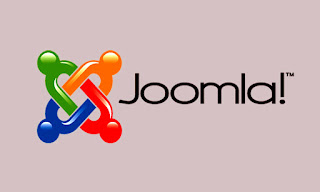Install & Configure Joomla on CentOS/RHEL 6x
Q. What is Joomla?
-- Joomla is a popular Open Source Content Management System (CMS) tool which allows us to easily build dynamic website and manage online applications. It also manage & publish your website contents like video, pictures, articles on the website. Joomla is freely available, which supports huge third party plug-ins and themes. With the help of Content Management System (CMS), you can set up websites in the World Wide Web (WWW) without having knowledge of programming.
Step: 1. Set Host Name :
# hostname joomla.domain.com
# vi /etc/sysconfig/network
HOSTNAME=joomla.domain.com
-- Save & Quit (:wq)
Step: 2. Bind Hosts File :
# vi /etc/hosts
10.100.99.214 joomla.domain.com joomla
-- Save & Quit (:wq)
Step: 3. Disable Selinux & Stop Firewall :
# vi /etc/sysconfig/selinux
SELINUX=disabled
-- Save & Quit (:wq)
# service iptables stop
# chkconfig iptables off
Step: 4. Install NTP Server (for Time Synchronization) :
# yum -y install ntp ntpdate
# service ntpd restart
# chkconfig ntpd on
# ntpdate pool.ntp.org
Step: 5. Install Apache Server :
# yum -y install httpd httpd-devel
Step: 6. Edit httpd.conf file :
# vi /etc/httpd/conf/httpd.conf
#ServerName www.example.com:80
-- Add this Line:
ServerName ip_address_of_server:80
-- Save & Quit (:wq)
Step: 6. Download & Extract Joomla Package :
# cd /var/www/html
# wget http://joomlacode.org/gf/download/frsrelease/18323/80367/Joomla_3.1.1-Stable-Full_Package.tar.gz
# mkdir joomla
# tar zxvf Joomla_3.1.1-Stable-Full_Package.tar.gz -C joomla/
# chmod -Rf 775 joomla
Step: 7. Edit the 'httpd.conf' File :
# vi /etc/httpd/conf/httpd.conf
-- Add those Lines :
<Directory /var/www/html/joomla>
Options -Indexes +Multiviews
DirectoryIndex index.php index.html
AllowOverride All
Allow from all
</Directory>
-- Save & Quit (:wq)
Step: 8. Install MySQL Database Server :
# yum -y install mysql mysql-server mysql-devel
Step: 9. Start MySQL Service :
# service mysqld start
# chkconfig mysqld on
Step: 10. Setup MySQL Root Password :
# mysql_secure_installation
Step: 11. Create Database & User for Joomla :
# mysql -u root -p
-- Give root Password.
Mysql> create database joomladb character set utf8;
Mysql> grant all privileges on joomla.* to joomla@'localhost' identified by 'password';
Mysql> grant all privileges on joomla.* to joomla@'%' identified by 'password';
Mysql> flush privileges;
Mysql> exit
Step: 12. Install PHP5 Scripting Language :
# yum -y install epel-release
# yum -y install php php-devel php-cli php-mysql php-common php-gd php-mbstring \
php-mcrypt php-imap php-xml php-xmlrpc
Step: 13. Check php Configuration :
# vi /var/www/html/info.php
<?php
phpinfo();
?>
-- Save & Quit (:wq)
Step: 14. Restart Apache to Load php :
# service httpd restart
# chkconfig httpd on
Step: 15. Then Point your Browser to http://ip_address/info.php :
Ex- http://10.100.99.214/info.php
Step: 16. Configure Joomla Server through Web Browser :
Go to http://10.100.99.214/joomla
-- Select Language: English
-- Site Name: Koushik's World
Admin Email: kchatterjee@domain.com
-- Admin Username: admin
Admin Password: Passw0rd
Confirm Admin Password: Passw0rd
-- Click Next
-- Database Type: MySQL
Hostname: localhost
Username: joomla
Password: password
Database Name: joomladb
-- Click Next.
-- Just Skip Ftp Configuration.
-- Click Next.
-- Select Blog English Sample Data.
-- Click Install.
-- Click on Remove Installation Folder.
-- Click on Site.
Thanks For Visiting on My Blog, For More Tutorials Keep Visiting My Blog


0 comments:
Post a Comment